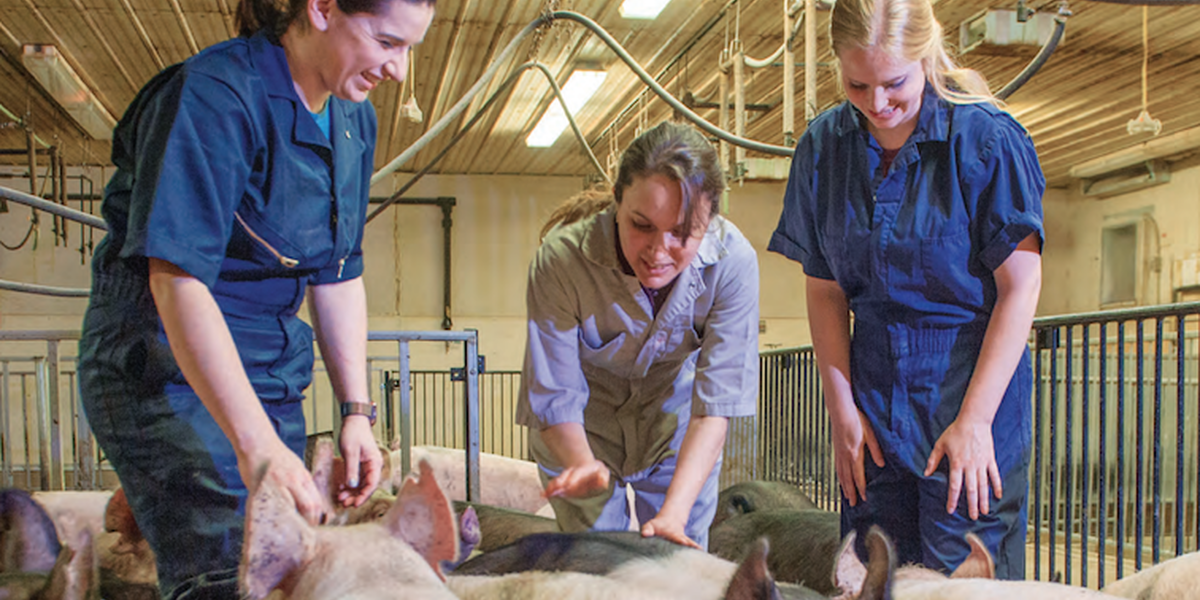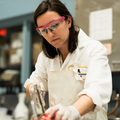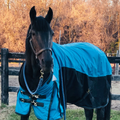- Issue:Published:
Preventing disease and improving animal health is a veterinarian’s sacred oath, and for livestock veterinarians, that also means a focus on population health. This dual mission gives them insights that we can learn from in uncertain times. Historically, many human health practices—vaccination, herd immunity, biosecurity and isolation, and fecal transplantation—were derived from animal agriculture. The livestock veterinary profession has developed several principles that can serve humanity well as we combat COVID-19.
The world is filled with infectious agents
Most microbes are beneficial and essential to animal and human survival. But to prevent disease, livestock veterinarians assume everything and everyone is infected; a mindset supported by years of research on infectious disease transmission. They advise farmers to establish clear “boundaries” with biosecure barriers. Examples include restricting people to visiting one farm per day, wearing clothing that is only worn and laundered on the farm and showering on-site before entering, spraying packages with disinfectant, cleaning and disinfecting transport vehicles, and quarantining arriving animals and feed before entering the general population. What is called biosecurity in agriculture is social distancing in public health.
Every disease is unique
Livestock veterinarians have learned through a significant investment in diagnostic surveillance that a dynamic community of bacterial and viral disease pathogens is circulating—ready to pounce on a vulnerable pig, cow, chicken, or turkey. Many cause only minor symptoms, but some—like the H5N2 Highly Pathogenic Avian Influenza outbreak of 2015—have devastating consequences. These pathogens are constantly evolving to survive our efforts to prevent or kill them. Consequently, the tools we use to fight infectious diseases must also adapt.
Population density and movements matter
There are advantages for farms of similar types to operate in clusters. Processors and suppliers can offer benefits because a cluster of farms provides them with efficiencies of scale. But proximity also makes it easier for certain infectious diseases to spread between farms. We can see COVID-19 spreading in cities for the same reasons. Using epidemiological models and analysis of the movement of people and animals throughout the supply chain, veterinarians can customize their recommendations for each farm’s unique situation. Our human health guidance should be similarly nuanced.
Disease surveillance is essential
Livestock operations depend on continuous health monitoring provided by veterinarians trained to spot emerging diseases who in turn partner with farmers to notice behavioral changes. The veterinarians are supported by a national network of diagnostic laboratories that analyze disease pathogen samples. It can be challenging to justify investments in surveillance when livestock diseases occur at “normal” levels, and vigilant surveillance leads to better health. Veterinarians know the benefits outweigh the costs, and that when outbreaks do occur, surge capacity is vital for the continuity of business.
Make good health a habit
Farm workers closely monitor their animals to ensure they are eating, drinking, and generally healthy. When disease outbreaks begin, veterinarians are called because they are skilled at assessing the clinical situation, collecting necessary epidemiological information and medical samples, and treating illness with proven therapies. Veterinarians use sophisticated on-farm record systems to track daily trends and ensure no change is missed. And veterinarians make on-farm health care holistic by advising on animal handling and housing, biosecurity protocols, and health practices that enhance animal and employee health.
We will survive
Epidemics are scary and overwhelming. Livestock veterinarians have learned to share observations and insights across business and political boundaries. Experience has shown that the community’s wisdom and creativity will eventually control or defeat the disease. That reassurance may be cold comfort as animals succumb to disease and their owners suffer emotional and economic losses, but livestock veterinarians remain focused on a positive outcome for the population.
Unfortunately, we are all creatures with bad habits. If everyone followed these principles all of the time, there would be far fewer infectious disease outbreaks. As with so many things in our lives, making progress and adapting to changing conditions as you go is vital. Veterinarians know that improving our performance on even a few of these principles makes a big difference.
About the authors
The undersigned veterinarians and researchers are faculty at the University of Minnesota College of Veterinary Medicine (CVM).
Trevor Ames, DVM, MS, DACVIM, associate vice president in the Office of Associate Vice President for Academic Health Sciences and professor in the CVM
Carol Cardona, DVM, PhD, professor and Pomeroy Endowed Chair in Avian Health in the Department of Veterinary and Biomedical Sciences (VBS)
Cesar Corzo, DVM, MS, PhD, associate professor in the Department of Veterinary Population Medicine (VPM) and Leman Chair in Swine Health and Productivity
Marie Culhane, DVM, PhD, associate professor in the VPM
John Deen, DVM, MSc, PhD, professor in the VPM and affiliate faculty in the Institute for Health Informatics
Tim Johnson, PhD, associate professor in the VBS and director of research and development at the Mid-Central Research and Outreach Center
Noelle Noyes, DVM, PhD, assistant professor in the VPM
Erin Royster, DVM, MS, assistant professor in the VPM
Randy Singer, DVM, PhD, professor in the VBS
Montserrat Torremorell, DVM, PhD, associate professor in the VPM
Jerry Torrison, DVM, PhD, DACVPM, director of the Veterinary Diagnostic Lab and professor in the VPM
Kim VanderWaal, PhD, assistant professor in the VPM
Perle Zhitnitskiy, DVM, MSpVM, assistant professor in the VPM
Editor’s note: The views expressed here are those of the authors and not necessarily of the University of Minnesota College of Veterinary Medicine. We present them here to further discussion around topics related to veterinary medicine that our faculty, staff, and students find important and worthy of deeper contemplation. We encourage you to send responses to cvmcomm@umn.edu.




